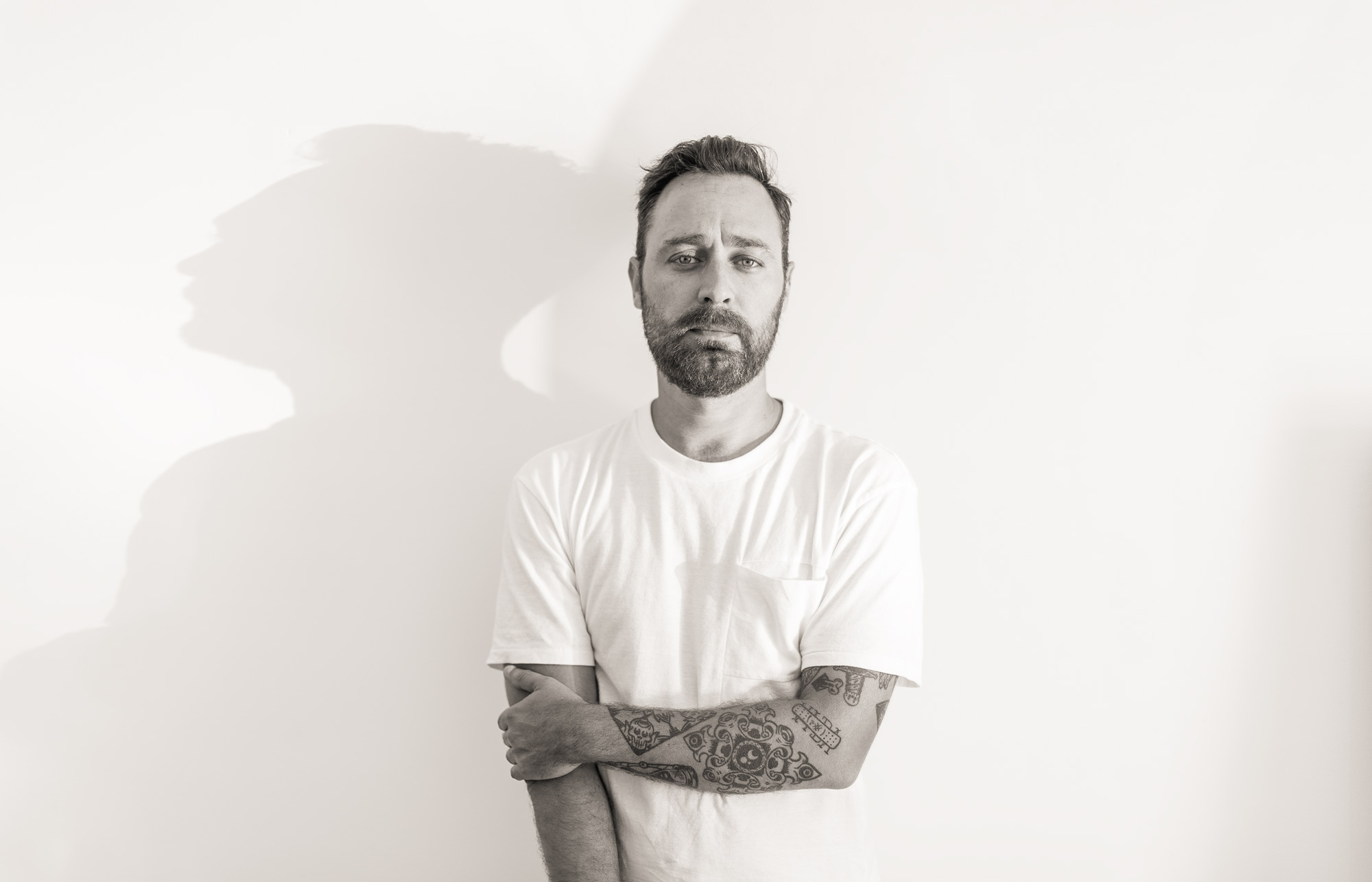
AddFuel
Tales From The Tiles
Interview by Sasha Bogojev // Portrait by Hugo Moura
During these globalized yet strongly divided times in which we live, it is necessary to be reminded of the traditions that can bring us together, as well as those that tear us apart. Blinded by modernization, progress and everything that comes along with it, one tends to forget the beauty and importance of heritage. Whether we're talking about small neighborhood communities or entire cultures, these specific traditions are too often trounced by mass, fleeting trends.
Exactly one decade ago, Diogo Machado, AKA Add Fuel, took it upon himself to point out just how quickly and easily cultures can get buried underneath these new rituals and iconography. Taking his native Portuguese culture as an endless source of inspiration, namely the well-known Azulejo tiles, he adapted the rich but pre-existing concepts and embedded them into universally understandable, symbolic language. Firmly attached to his roots, he modifies and embellishes, celebrating the beauty of multiculturalism and all the elements it has spawned; a precious concept much needed in the current climate.
Sasha Bogojev: What is Add Fuel?
Add Fuel: Add Fuel actually comes from a longer English expression, "Add Fuel To The Fire." Back in 2007, when I stopped doing graphic design and started as an illustrator, I was working with international brands. Actually, all the characters you see in my patterns, tiles and designs, come from the personal character universe I started drawing and developing back then.
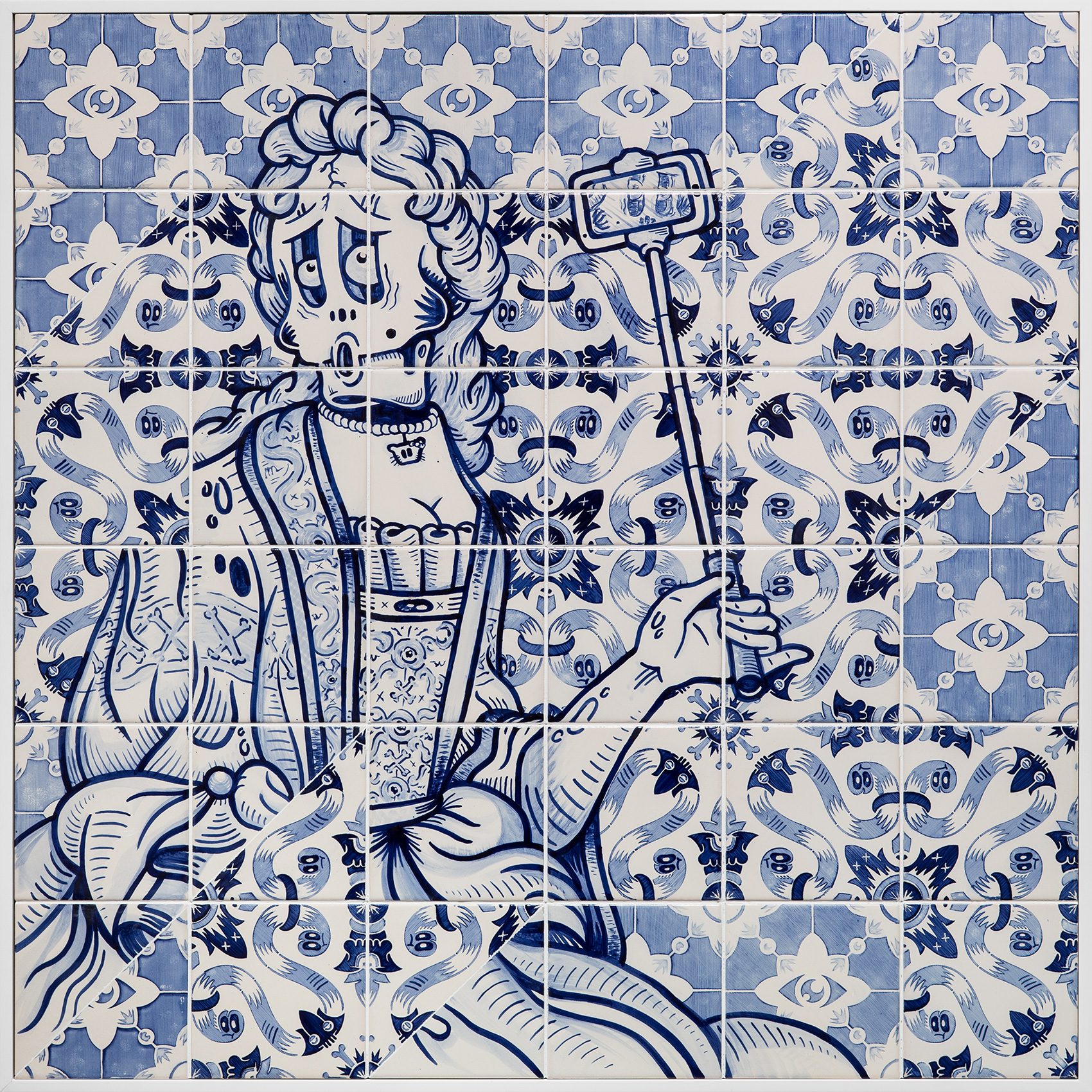
Anyways, Diogo Machado was very difficult to pronounce for non-Portuguese people, so I thought I needed to get an alias as something to represent me when working with international clients. This is why it sounds more like a brand name.
How did you come to choose that expression? It must have a special significance
As I like to subvert concepts and alter pre-existing ideas, I wanted to convert this expression that has a bad connotation into something positive. The idea was to ignite my work through that name, make it seen and noticed in the illustration world. As time went by and I started doing more artistic work and less illustration, I decided to shorten the name. Similar to Diogo Machado, I started feeling that Add Fuel To The Fire was long, and people kept making mistakes with it, so it did lose some of the sense of the original expression. At the same time, that broadened it to become more open to interpretation. For me, it symbolizes creative ignition, the explosion that happens when I work. The full name is maybe not as poetic, but this could have conceptual meaning, which I started thinking of later on.
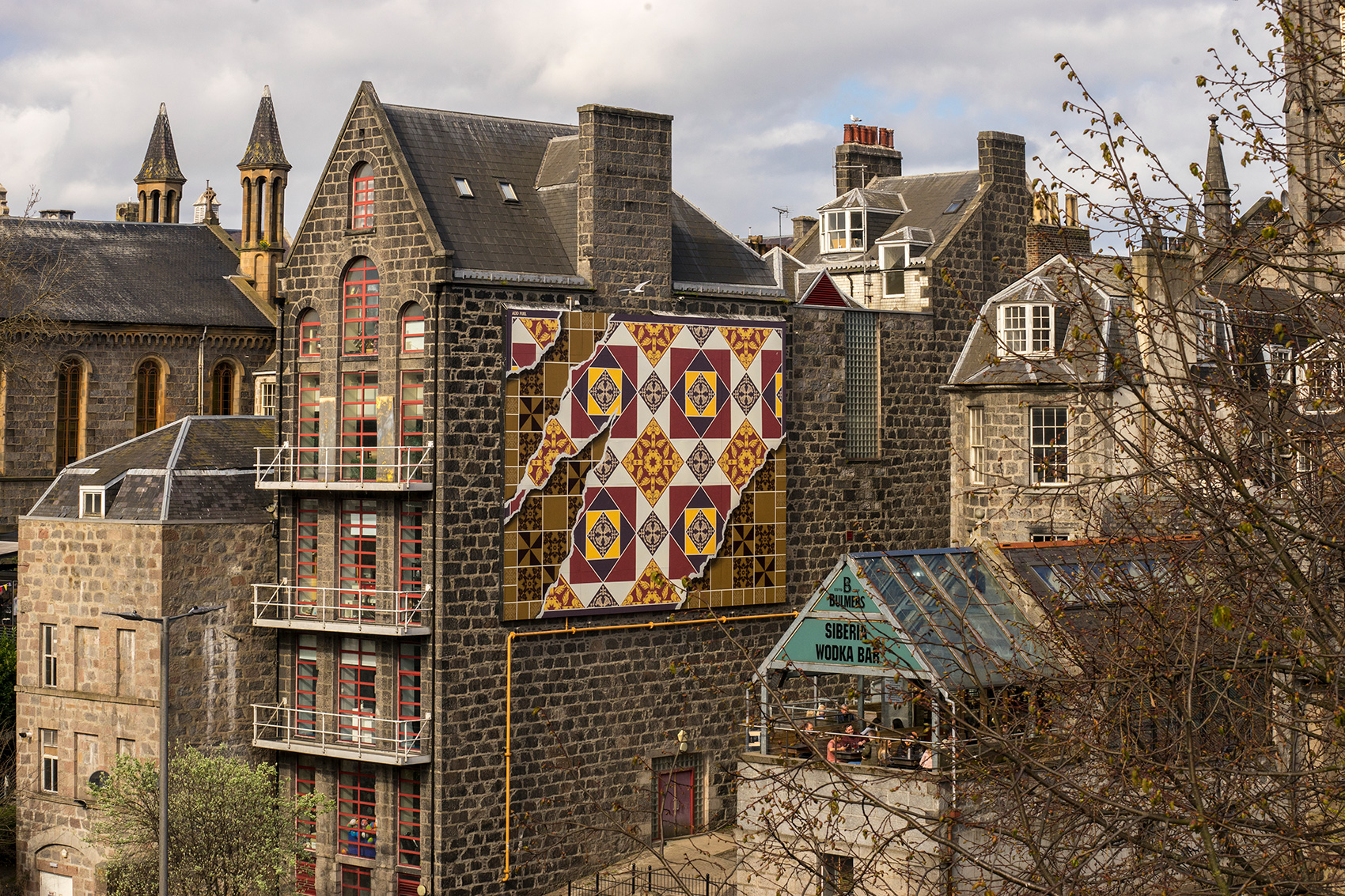
Do you remember when you started doing the tile-inspired work?
Back in 2007, a year after I started focusing on illustration, I was invited to do a project in my hometown of Cascais. They had big canvases covering walls around the city center, and they wanted to print some of my illustration work at a large scale. Back in my teenage days, I did some graffiti bombing, so I had no problem with putting my work in public, but it was the first time I worked with my city like this. So I was thinking about what could define me as part of the community, as part of this long, extensive, beautiful tradition this city has. My illustrator mind thought of exploring some existing concepts and visuals, so after some rough sketches and ideas, I thought—if it's going on a wall, why not do something that resembles the tiles? In Portugal, many, many buildings are covered in tiles, so I thought I could include tile references in my work, like I would with design. I was super happy with it, and all the feedback was very positive, so I've decided to explore this more.
Covering buildings in traditional tile work isn't such a common practice outside of Portugal, is it?
We use it as an aesthetic piece, but also as a construction or architectural element because it isolates the building from humidity or salt and maintains the structural integrity of the wall. For me, being Portuguese, they belong on the outside, on the street, so that is where I wanted to put my work, too. After a while, I started thinking of ways to do this in a more economic way because it wasn't cheap to produce tiles and put them out in public. Around that time, I started getting invited to do walls, so I slowly switched to stencils. And right now I’m doing both of them.
Did you swap your illustration work for this?
Well, it happened gradually; the more I was doing artistic work and researching about tiles, the less I was doing illustration work. Eventually, I got equipment to work with ceramics in the studio, and once I started making those, I figured I needed to put them outside, because tiles live on the street. So I started doing night runs and putting those up around Lisbon, Cascais and around there.
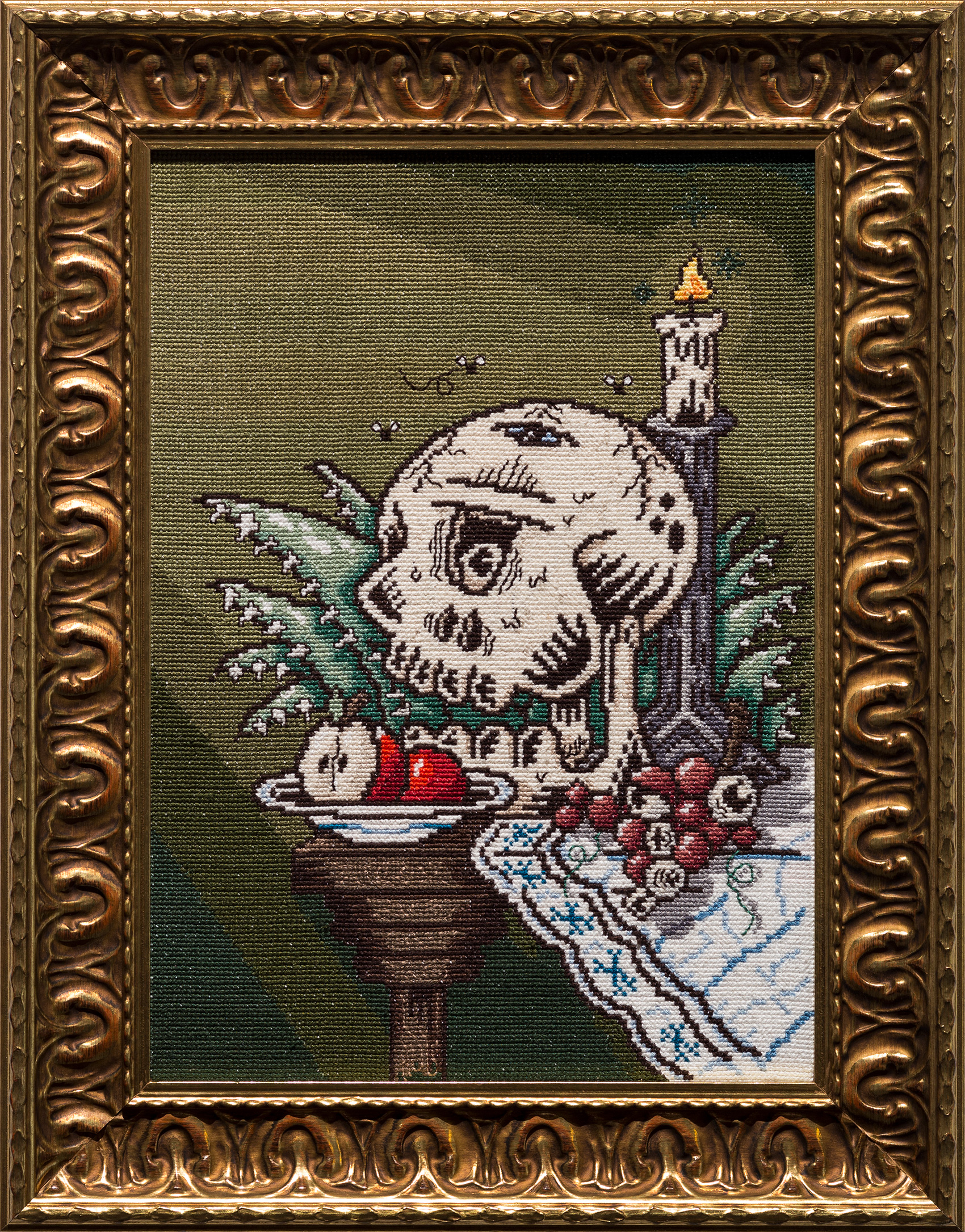
Did you imagine this locally-oriented concept would get you such wide international recognition?
No, not at all! It's so weird because, when I make this kind of work in Portugal, people relate on a cultural or traditional level. An old lady told me that she likes that I’m putting tiles on the wall, even though she didn't even see what the design was. She just assumed they were the traditional tiles we have everywhere. Or little kids discover the little details and enjoy them for what they are.
In your last solo show with Underdogs in Lisbon, you had other traditional crafts. How did that idea come to be, and were you happy with the results?
When I worked on my first mural, I sketched out a few ideas about reinventing different techniques. I actually don't like the term "reinventing" cause I’m not inventing anything. I’m just restructuring or re-appropriating it. Things like cross-stitched embroidery have a strong tradition as well, so I finally did some tests with that. I was gonna have more, but it wasn't really possible because it's difficult to find people to do it. All these works are nowadays done by old people, who only work in their free time and don't do show deadlines [laughs]. But I wanna explore more of it, mix the different techniques, and will try painting and creating objects, as well as relief tiles.
Did you ever have any negative feedback about redesigning such strong traditional elements?
I had this heated conversation with a local architect at a conference a while ago. I was presenting my work there and addressed it as Azulejos, which are traditional Portuguese tiles. Azulejos and tiles are not exactly the same thing, and he insisted that my work wasn't traditional, so it couldn't be titled as such.
At some level, he was probably right, but these days, the tiles I’m making in the studio are produced using methods and materials that are replicas for 17th century equipment, so I would definitely call it Azulejos.
How do people outside of Portugal react?
Sometimes they don't know what it is, but it's a pattern structure consisting of non-offensive imagery, so they generally like it. In the US, a lady told me she liked my work because it reminded her of the Mediterranean. She didn't recognize the traditional element, but it did remind her of some exotic place. Maybe this is why it's so appealing internationally because it reminds people of places they wish they could visit, or they’d been to, or feel connected to.
Your work abroad has a very different look. Why is that?
When I’m working outside Portugal, I try to do some research and adapt my work into the culture, like in Norway or Scotland. I didn't work with the signature white-and-blue colors there, but tones used in their local designs, and people could identify with the work. It is sort of a sensitive issue to work with other cultures’ elements, but luckily, I never had negative feedback about my vision of their tradition.
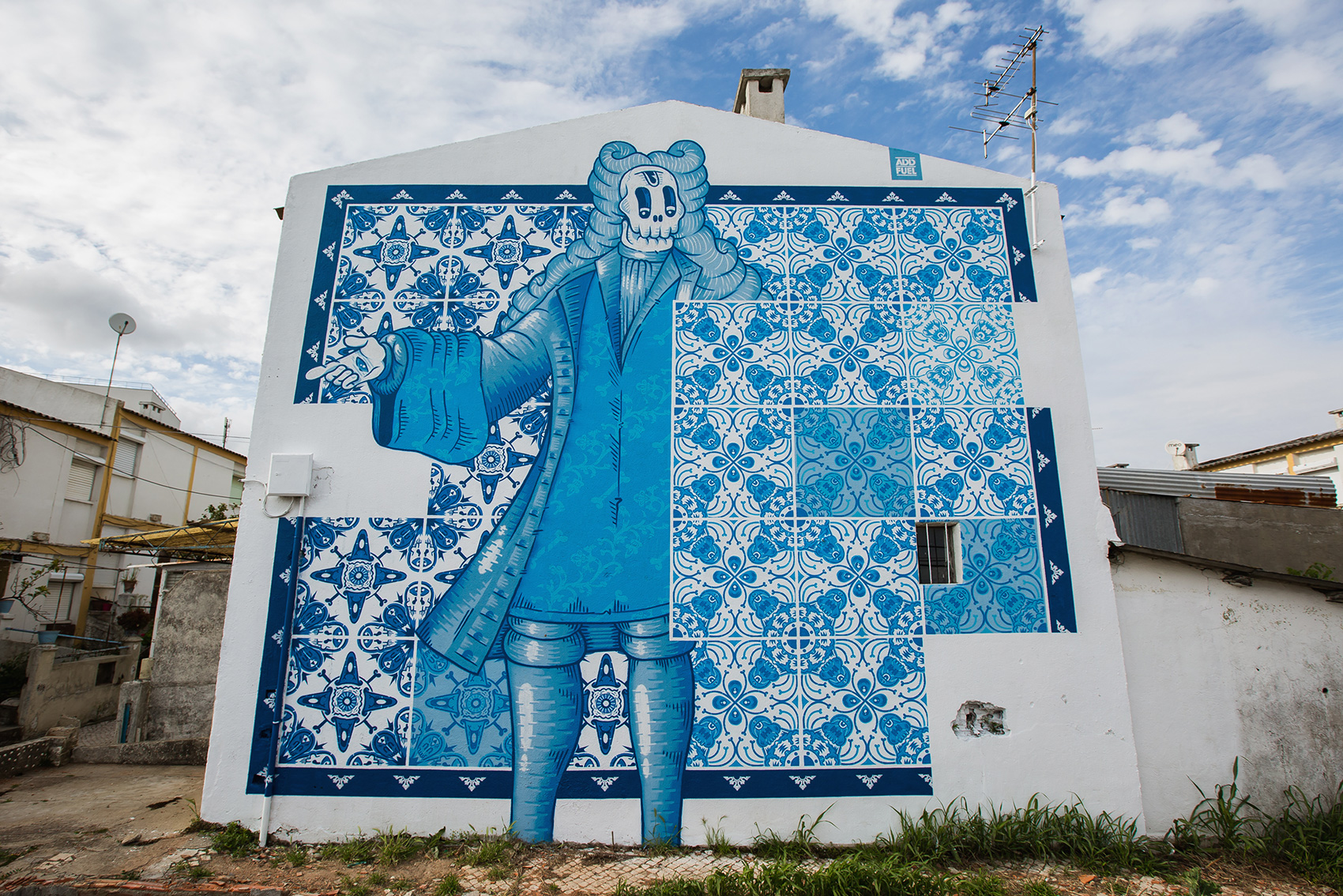
It’s obviously important to you to do extensive research.
It's super important, and aside from the actual painting process, this usually takes the most time. I do a lot of research online, I connect with local people and try to get information from them, in addition to books about the subject, because it's very important for me to get the idea of what I’m re-working. I need to get that main idea, including shapes and colors, so then I can just play with it. I like to contextualize my work and make it fit the city or the culture. And if that's not possible, I'll try to connect in some other way. Like in Sacramento, where they don’t have a tradition with tiles, I discovered a story about a Portuguese or Spanish explorer from the fifteenth century who was among the first to discover the area. So, I included my interpretation of his statue in my design there, and mixed it with some elements of the US flag. In those cases, I'm trying to find a balance between the story I want to tell while keeping the integrity of my work, so it doesn't look too forced.
What is the meaning behind all the rips and tears that are constantly present in your work?
They came from an idea that the tradition and culture is within us. Having them on a wall like that makes it look like rediscovering something that was already there. I find it interesting to get people's attention about that issue. Living in a fast world full of globalization, people almost don't care about these things anymore, so I feel like telling them, "Come on, look at your own culture and tell me what's beautiful about it. If you can't tell me, I'll come to your country, I'll paint there and show you." [laughs]
How would you define your mission?
The main idea behind everything I do is tradition and heritage and the fact that those are underneath the walls of our cities. This is the main concept I've been working on right now with all the rips and cuts and shadows, creating the effect of something that could be underneath the wall surface. And having this main concept in mind, I try to find an interesting story about each place I’m working in. Even if the connection only makes sense in my mind, I'll just try and translate it into the painting.
It seems very gratifying to be able to leave your mark in many places.
It's very rewarding, I would say. I like it because it forces me out of my comfort zone, out of my usual concepts and styles in order to fit the new culture. And most of the time, I get a good result, which I’m very happy with. The most rewarding thing is people's feedback. If only five people tell me they like my work and recognize how I reinterpreted their tradition, it feels like I passed on my idea, and that feels great. It's a delicate thing to do. Maybe I've just been lucky so far.
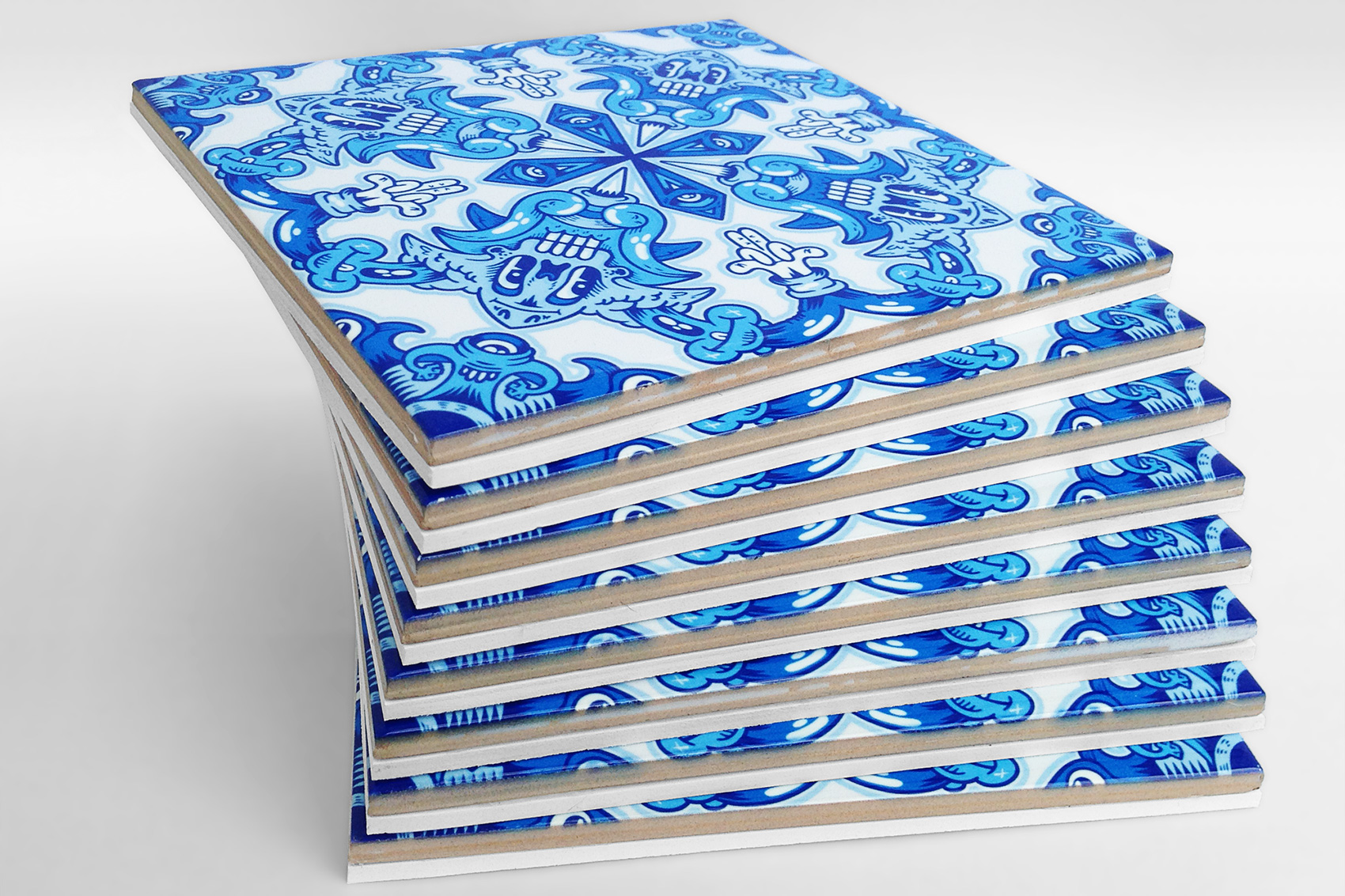
Can you tell us a bit about the characters you have started incorporating in your work?
Yeah, last year I was painting in Lisbon, in an area that is supposedly the most dangerous part of the city. When I went there before I started painting, I got to meet the locals and they were the most genuine Portuguese people I've met. They don't have much money, but they are hardworking and love their neighborhood. Now, in Portugal, there are certain styles of tiles that incorporate life-size human figures. They are called "invitational figures," and they were placed at the entrance of the palace or house of a nobleman in order to make the guests feel welcome. I had an idea to create a mural with a large figure like that, so it invites people to the neighborhood.
Are those characters large version of your illustrations?
Actually, most of them are based on or refer to old paintings or images that I find. I then try to redraw them in my style and make them fit my concepts. I think they compliment the patterns well, keeping a good balance between the two. Plus, it helps people to connect with the work because it's a big element they can notice and recognize right away.
Your work translates well on both a small and large scale. Do you have a preference between the two?No, I don't. I like to do them both, but it doesn’t happen as often as I would like. I usually get invited to paint one or the other. It rarely happens that I’m able to to do both, like in Aberdeen, where I painted a big piece and a smaller collaboration with Jaune. I love that you can see the smaller pieces at eye level, but I also enjoy blowing up the stencils on a large scale.
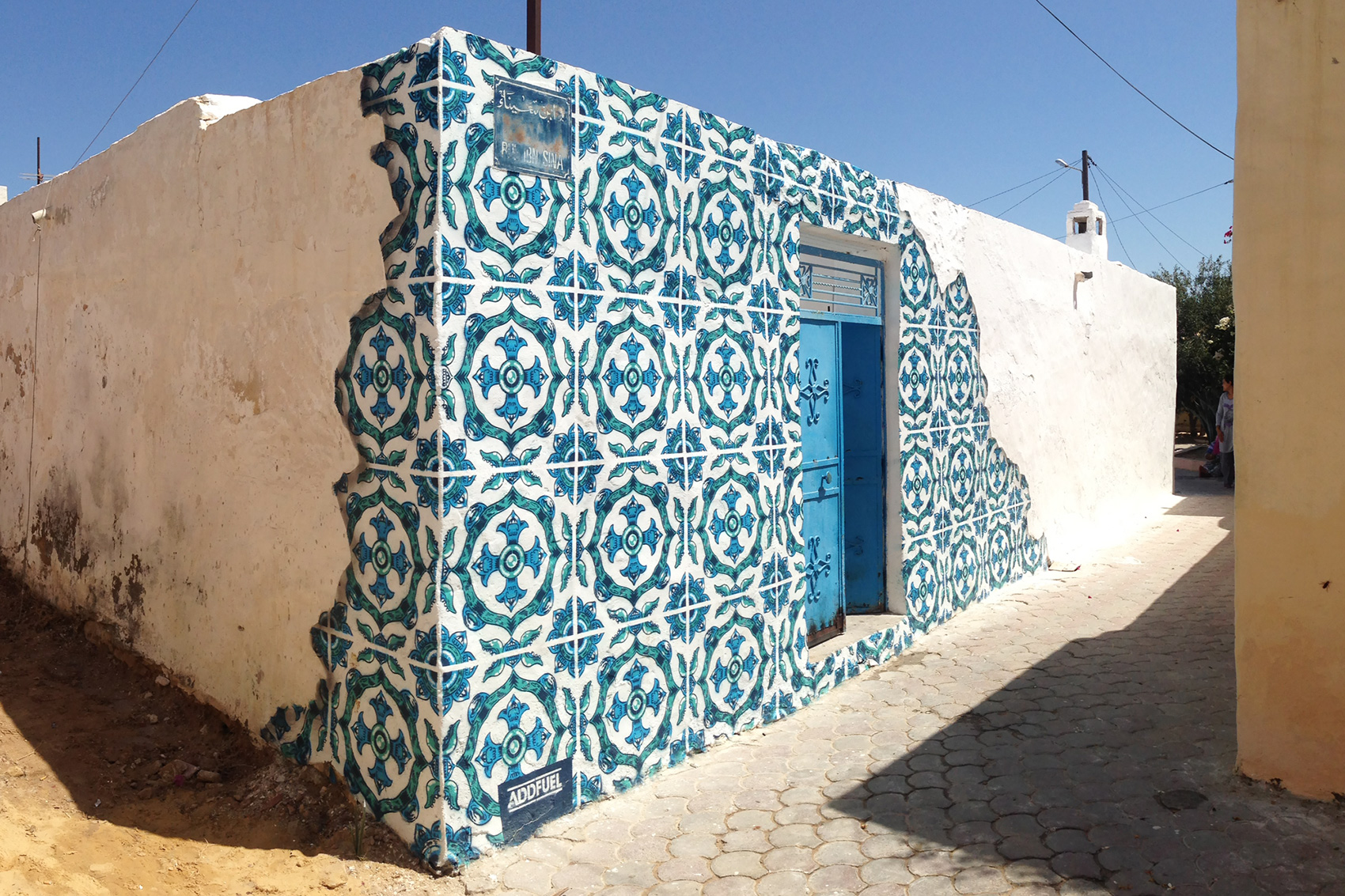
Do you prepare your stencils ahead of the project?
Yeah, and this is killing me slowly. I always do different stencils for different murals, so I have a really big pile of stencils. They are laser-cut, so that part is not a problem, but the research, drawing, preparing the files, making the layers interact—it all takes quite a long time in the end.
What are your goals for foreseeable future?
I think, in the near future, I’m gonna have to get a permanent studio assistant. Hopefully this person can travel with me and do projects. Aside from that, I don't have goals to be a superstar artist or get rich. I just want to be able to continue doing this thing that makes me happy.
What is next on your schedule?
I have a big project in Lisbon that was actually a goal I didn't realize I had! I was invited to be part of a ceramic panel in one of Lisbon's main avenues that already has five tile interventions by important Portuguese artists. I got the honor to create the last piece at the end of the avenue. The project involves the national tile museum, as well as one of Portugal's biggest and oldest ceramic factories, and the piece will consist of three big walls that should be finalized by the end of September. Aside from that, I have a few mural projects scheduled, and I’m working on a self-published book that will be a compilation of my work from 2007–2017. The book will also feature a catalog of patterns I've used over the years and will hopefully close with the upcoming Lisbon project as a big mark of my ten-year career.
Add Fuel is based in Cascais, just outside of Lisbon, Portugal.
addfuel.com





